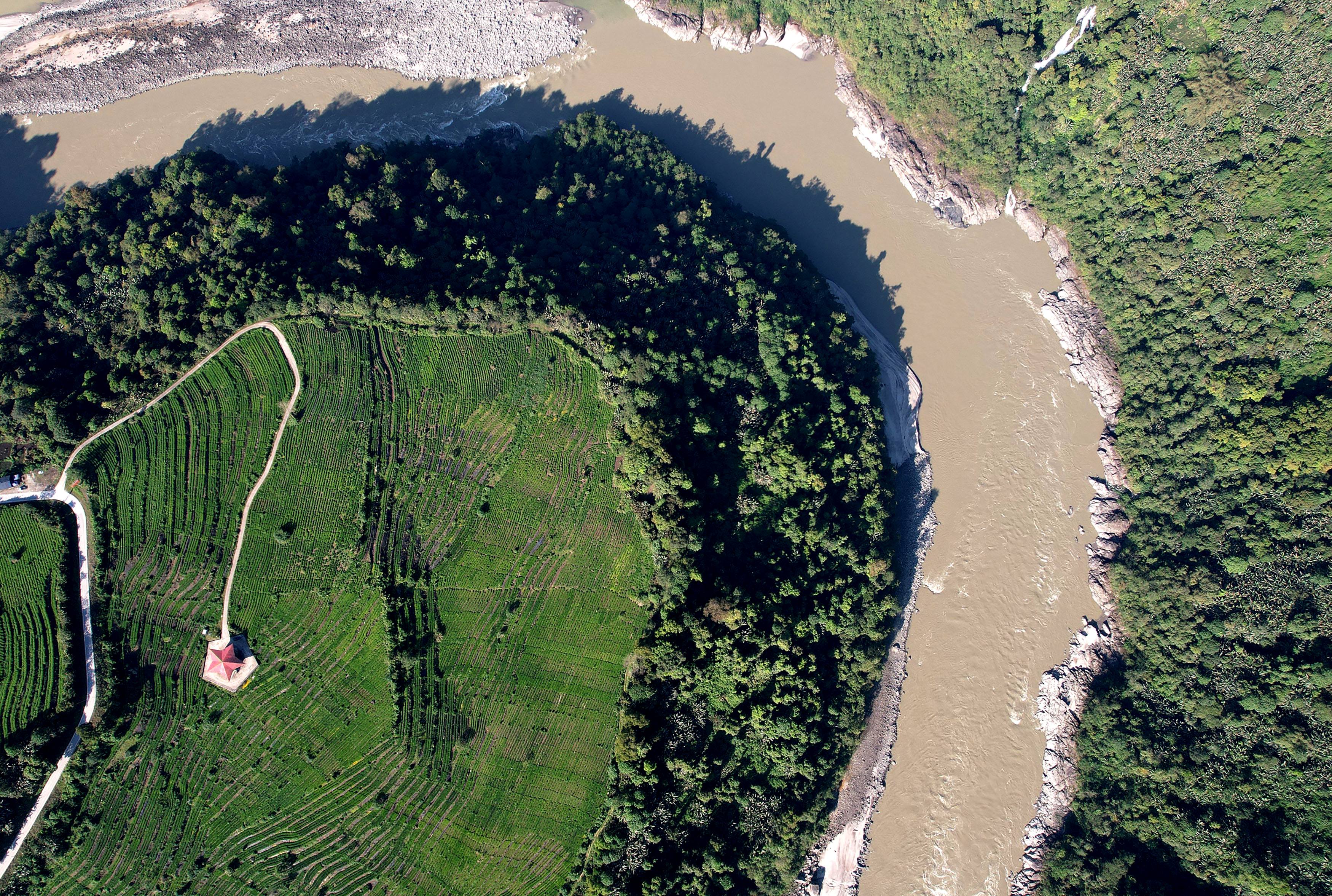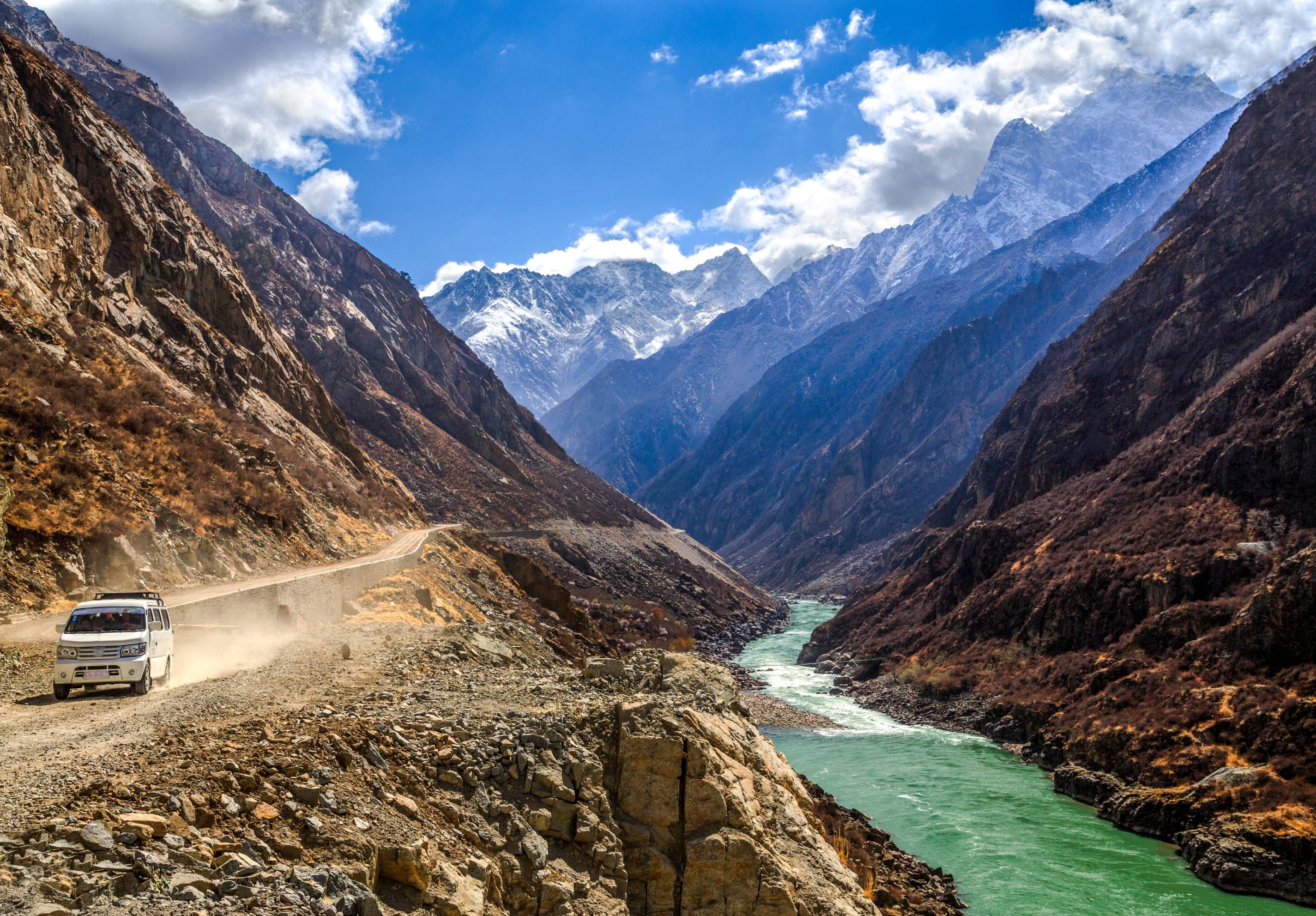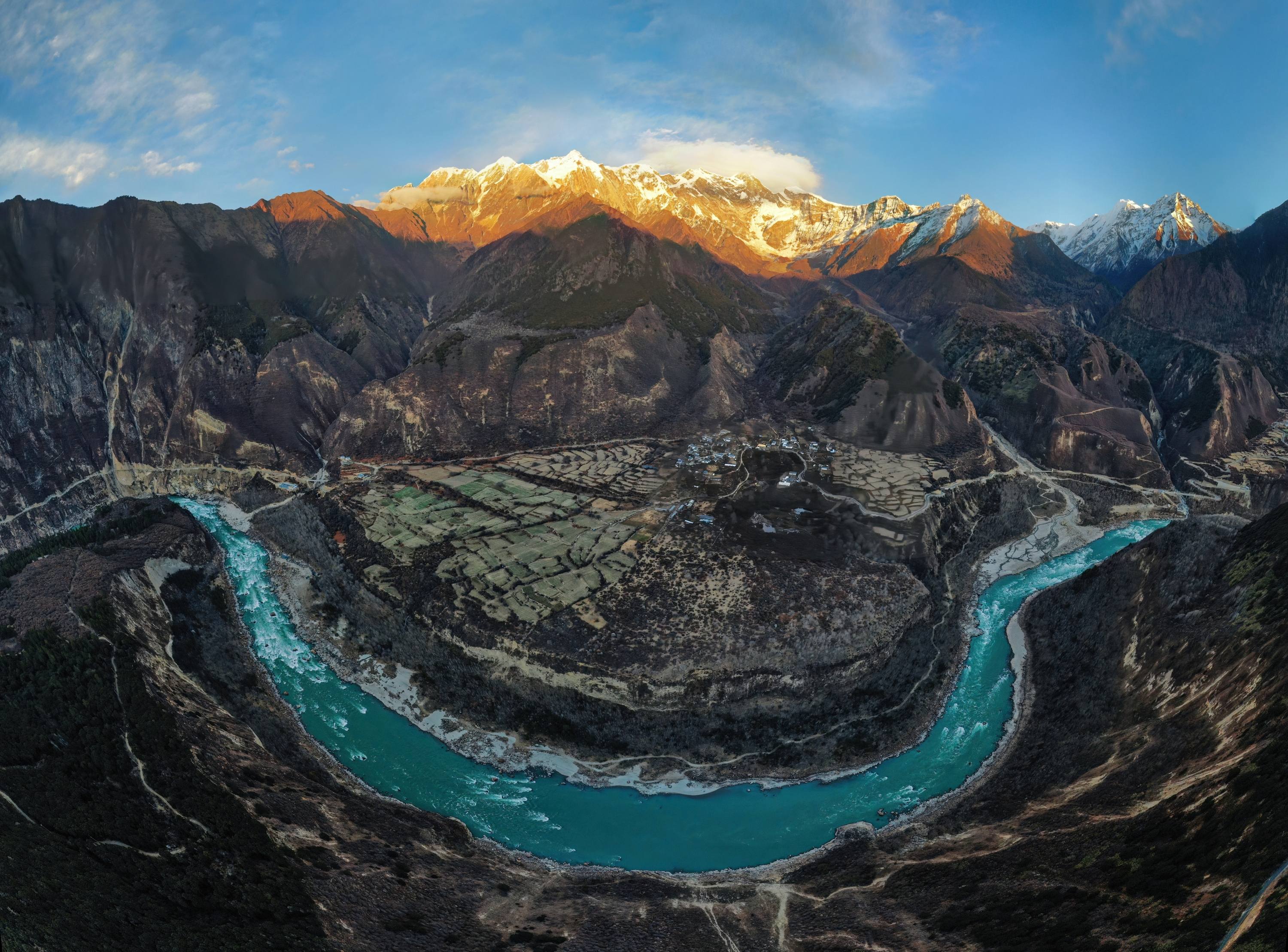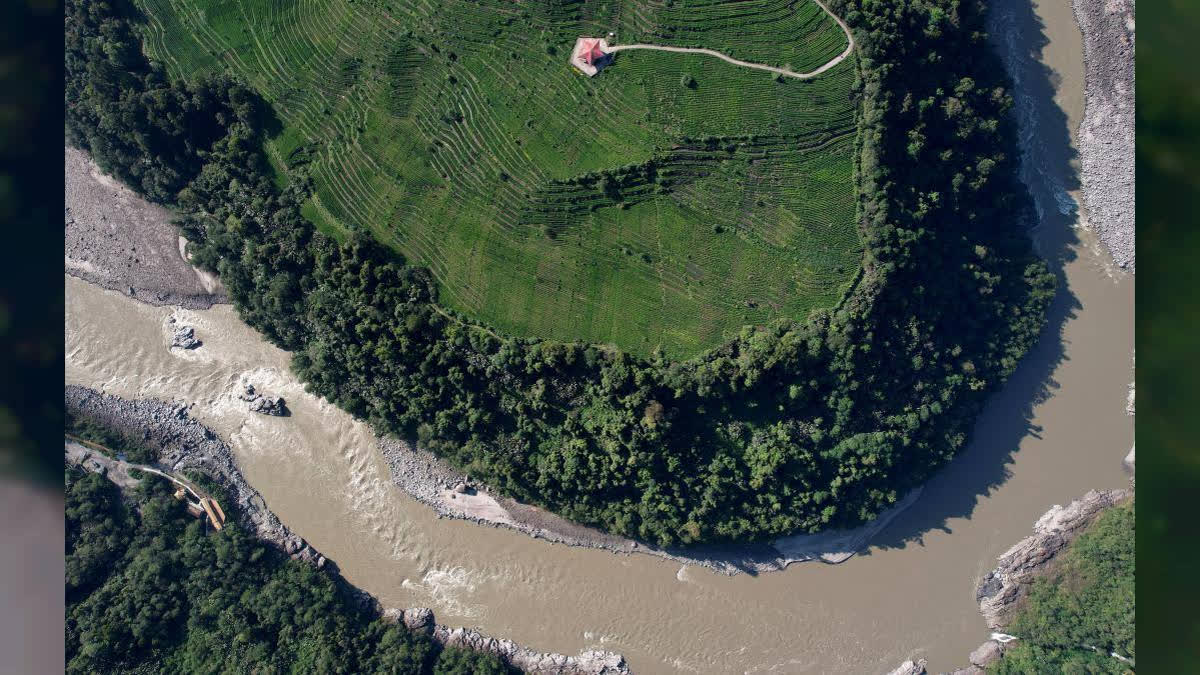The state-run news agency of China, Xinhua reported on December 25 that China has approved plans to build the world’s largest hydroelectric dam on the lower reaches of the Yarlung Tsangpo (Brahmaputra). The river originates in Tibet and flows into India and Bangladesh.
With an estimated cost of $137 billion, the proposed Yarlung Tsangpo dam would be the most expensive infrastructure project ever in global history. There is no denying that the dam is the most ambitious step in China's quest for energy sustainability and would be a monumental engineering feat.
This engineering marvel to be, unfortunately has very serious environmental concerns, societal impact, and strategic implications, especially for India and Bangladesh. The river is known as Brahmaputra in India and Jamuna River in Bangladesh.

The Engineering Marvel
China's proposed dam aims to generate an estimated 300 billion kilowatt-hours of electricity annually. This output is more than three times that of the ‘Three Gorges Dam’, also in China, which is currently the largest dam in the world. The project will go a long way to achieve China's planned carbon neutrality by 2060 through renewable energy. According to ourworldindata.org China today is, by a significant margin, the world's largest carbon dioxide emitter: it emits more than one-quarter of global emissions.
Challenging Topography
The Yarlung Tsangpo River descends about 2,000 meters over a stretch of 50 kilometres in the area known as the Great Bend in the Namcha Barua area. To harness the immense hydropower potential due to the steep fall over a short distance, engineers will need to drill four to six tunnels of up to 20 kilometres long through the Namcha Barwa mountain. The Namcha Barwa–Gyala Peri massif hosts some of the Earth’s most active ongoing geologic processes.
Cost and Risk Factors
The construction site sits atop the boundary of the Indian and European tectonic plates. The massive dam construction in this region using untested engineering techniques may lead to irreversible damage to the topography and ecology of the entire region.

Environmental Concerns
The dam’s construction threatens to further disrupt the already fragile ecosystem of the Tibetan Plateau, a region of unparalleled biodiversity. The large-scale alteration of river flows and landscapes could result in the destruction of habitats for endemic species, many of which are already under threat due to climate change and human activity.
Downstream Effects on India and Bangladesh
China has sought to reassure India and Bangladesh that the proposed dam on the Yarlung Tsangpo will not impact downstream water flow. It emphasises that the project is a "run-of-the-river" initiative. It is designed to use the potential energy of the river water to propel the turbines and return it to the Brahmaputra River without disrupting its natural flow. This approach, according to China, ensures minimal ecological or hydrological disturbance. This argument has not allayed fears in India and Bangladesh.
Lessons from the Mekong River
China’s handling of dams on the Mekong River serves as a cautionary tale. Environmental damages and reduced water flows have harmed ecosystems and disrupted the livelihoods of millions downstream. This history fuels scepticism about the potential benefits of the Yarlung Tsangpo dam for downstream nations.
Millions in India and Bangladesh rely on the river for agriculture, drinking water, and fisheries. Altering the river’s natural flow could exacerbate droughts and floods, affecting livelihoods and food security.

Displacement and Resettlement
The construction of the Yarlung Tsangpo dam in Medog County, Tibet, is likely to involve significant displacement of local communities. Comparisons with the Three Gorges Dam, which displaced over 1.3 million people, suggest that similar or greater numbers might be affected in Tibet. Tibetan residents have long expressed opposition to dam projects, viewing them as exploitative ventures that benefit China at the expense of their homeland. Monasteries, ancient villages, and sacred landscapes are at risk of being submerged or otherwise affected by the dam's construction. This cultural loss could deepen the sense of alienation among Tibetans, who already feel marginalised within the Chinese state.
Geopolitical and Strategic Implications
India and Bangladesh, which have no formal water-sharing agreement with China, view the dam as a potential threat to their water security. By controlling the flow of the Brahmaputra, China could significantly impact agriculture, drinking water, and hydropower generation in these downstream countries.
Strategic Vulnerabilities
The dam’s location in Tibet near the disputed border with India adds a strategic dimension to the project. India, already one of the most water-stressed countries in the world, views China's ability to manipulate the Brahmaputra’s flow as a potential geopolitical lever. This development is likely to exacerbate tensions in the region, particularly in light of ongoing border disputes between India and China.
Need for Regional Cooperation
At least one study, conducted in China suggests that a large dam on the Yarlung Tsangpo could benefit all riparian states if managed cooperatively, enabling increased water flows during the dry season. However, mistrust between the countries makes such cooperation unlikely. India and Bangladesh may need to engage diplomatically with China and invest in adaptive measures to mitigate risks.
The Role of Infrastructure in China’s Strategic Goals
The Yarlung Tsangpo dam underscores China’s ambition to establish itself as a global leader in engineering and renewable energy. While the dam’s primary purpose is energy generation, its construction will also stimulate economic activity in Tibet, albeit at significant social and environmental costs. The project aligns with China’s broader strategy of integrating Tibet more closely into the national economy, reducing its reliance on central subsidies.
Use of Water as a Weapon
The dam’s location in a strategically sensitive region underscores its dual purpose: hydropower generation and geopolitical leverage. By controlling its flow, China gains a significant advantage. This control raises serious concerns about the potential use of water as a weapon by China during conflicts. By releasing large volumes of water, China could trigger catastrophic floods, disrupt civilian life, and compromise critical infrastructure in India. Additionally, such actions could impede India’s military operations in border areas by destabilising supply lines, creating logistical challenges, and exacerbating vulnerabilities in sensitive regions like Arunachal Pradesh. This dual-use capability transforms the dam into both a strategic and tactical asset for China.
Conclusion
The Yarlung Tsangpo dam embodies the paradox of modern infrastructure: a testament to human ingenuity and ambition, but also a source of profound environmental, social, and geopolitical challenges. While it promises to transform China’s energy landscape, its costs—monetary, ecological, and strategic—are immense. For India and Bangladesh, the project represents a potential threat to water security and regional stability. As construction proceeds, it will be crucial for all stakeholders to prioritise cooperation and sustainability to mitigate the dam’s far-reaching impacts.
(Disclaimer: The opinions expressed in this article are those of the writer. The facts and opinions expressed here do not reflect the views of ETV Bharat)



